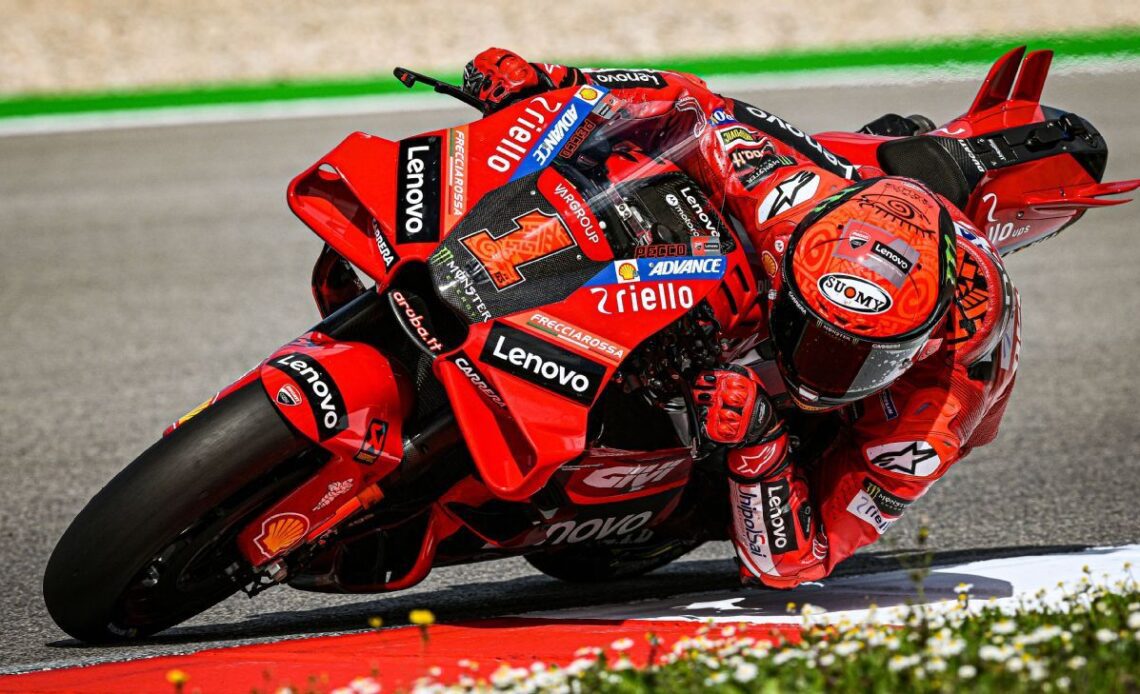Formula One can hardly put a foot wrong these days. From the advent of the Netflix documentary series “Drive to Survive” to the introduction of sprint races, motorsport’s premier series has seen its popularity balloon, with television audiences more than doubling in the U.S. since ESPN began as the sport’s American broadcaster in 2018.
It’s hardly a surprise, then, that MotoGP — the two-wheeled equivalent of F1 — has borrowed from its four-wheeled counterpart’s playbook. It has launched documentary series of its own, and the 2023 season will feature sprint races at all 21 rounds.
If imitation is the sincerest form of flattery, though, MotoGP’s admiration for F1 is no more apparent than in the motorcycles themselves. Manufacturers have steadily been introducing aerodynamic elements to help tame these incredible 300-horsepower machines since Ducati first began experimenting with winglets in 2015, but the 2023 preseason has been headlined by teams’ frantic race to understand and exploit the fickle world of aero.
Ducati and fellow Italian marque Aprilia lead the way in this space, as Motor Sport Magazine’s Mat Oxley notes, hiring aerodynamicists away from Ferrari. In a bid not to be left behind, Red Bull KTM has partnered with its longtime energy drink sponsor to tap into its F1-derived knowledge of aerodynamics.
“It’s a very rapidly growing sector in MotoGP,” Red Bull KTM technical director Sebastian Risse told ESPN. “Obviously, the place where most of the know-how is … is F1. Red Bull has huge experience and we generally have this good relationship with Red Bull, being our sponsor in many, many classes of racing. So when we found this opportunity that they would be open to work together with us hand in hand to conquer this area of aerodynamics, we were more than happy.
“I think they have been learning quite a bit already now, what are the areas that do match between four wheels and two wheels, and which ones not. The quicker we can figure this out together with them, the sooner we’ll be [at the front of the field].”
Until fairly recently, the primary goal of these aero elements was to aid in acceleration and top speed, creating downforce on the front wheel to keep it from lifting off the ground, such is the monstrous power of these works of art that boast nearly a one-to-one power-to-weight ratio….
Click Here to Read the Full Original Article at www.espn.com – RPM…

